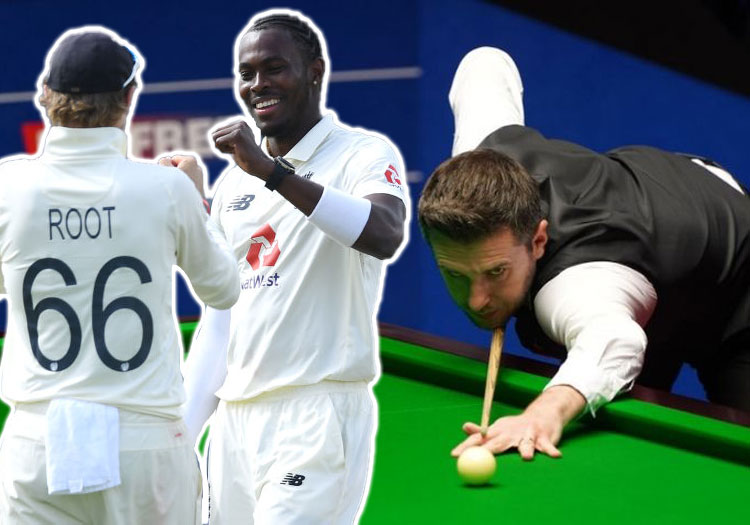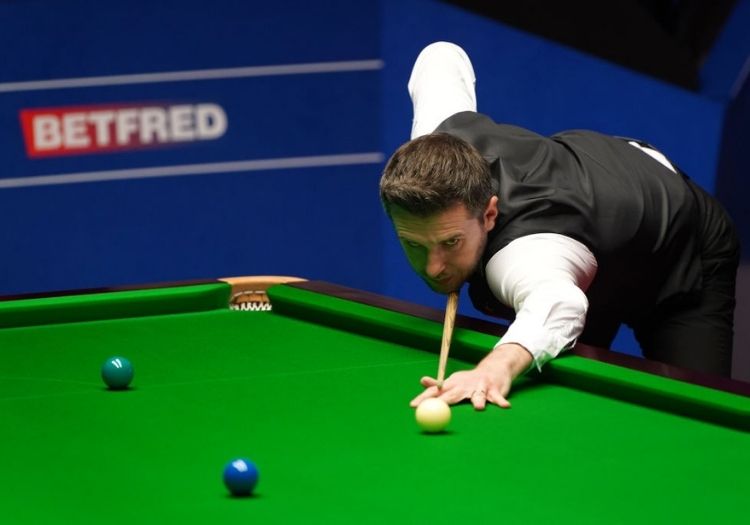HUW TURBERVILL: It’s always struck me that there are similarities between snooker and our beloved cricket actually: and I don’t just mean the importance of the red ball

The snooker was good, wasn’t it? Mark Selby, the victor, and Shaun Murphy played with great skill and character in the World Championship final at the Crucible Theatre in Sheffield, providing entertainment on a day when there was no County Championship cricket to follow.
It’s always struck me that there are similarities between snooker and our beloved cricket actually: and I don’t just mean the importance of the red ball; although a quest to find people who reached the top at both sports didn’t reap much, with the exception of Albert Brown.
He made a single first-class appearance for Warwickshire against the touring Indians in 1932, recording match figures of 2 for 96. In snooker he was twice runner-up in the English Amateur Championship and reached the semi-final of the World Championship four times between 1948 and 1953.
The World Snooker Championship for me always signals the start of the cricket season, however. I vividly recall being about 13, playing on a freezing day for Halesworth CC on some barren Norfolk pitch batting – or not batting actually – at No.11, not being asked to bowl and fielding at short-leg, wondering what the scores were at The Crucible, and wishing I was indoors watching it.
The significance of the century is the most obvious parallel: it’s the landmark figure for a batsman, and a snooker player. Building an innings is a bit like constructing a break, finding that fusion of discipline and risk.

Mark Selby in action at The Crucible
The Hundred intends to highlight the pivotal nature of three figures more than ever before: the scoreboard counting the balls up to 100 in the first innings, then down from 100 in the second.
At the start of an innings/frame there is a need for caution and care – a mixture of defence and attack. A great safety exchange in snooker could be the equivalent of New Zealand’s Kane Williamson enduring a forensic eight-over burst under cloudy skies at Lord’s with its slope and so on from the artful James Anderson. He might indeed survive and then open up to go to his century.
There’s a solipsistic aspect to improvement in the game – Malcolm Gladwell’s 10,000 hours of practice, and all that. You need to get in the nets to hit the heights; or spent weeks/months in dingy backstreet snooker halls.
Cricket is meant to be a team game, but we all know it’s individualistic. When you are batting, bowling or waiting for a catch to arrive after an interminable wait as it swirls in the grey sky or against the backdrop of the sun, it’s you and you alone in the spotlight, with no hiding place.
READ MORE FROM HUW TURBERVILL: Click here
Both sports’ administrators have/are attempting to jazz things up: appeal to the ‘yoof’ who – we are told – have the attention span of a gnat.
Shorter formats have been introduced – T20, T10 and The Hundred in cricket; the Snooker Shoot Out at the Watford Colosseum.
The ECB and WPBSA seem a bit ashamed that their sports are, frankly, a bit uncool (I say that as a devotee of both). They are finickity, rules-laden and ponderous games, a journey rather than an arrival (that’s no bad thing I should add). Hence the governing bodies bring in disco lights and razzmatazz, which alienates the traditional audience. Can’t we just love the sports for what they are?
There’s also the similarity between trick and tricksy shots in snooker - check out the break from Mark Williams below - and similar tactics in cricket I believe: I’m thinking of Trevor Bailey bowling down the legside at Australia at Lord’s in 1953.
There also seemed to be quite a few reracks in the recent World Championship. That didn’t seem to happen that often in the 1980s, when I was a more avid viewer. Jimmy White or Alex Higgins would lose their patience and clatter into the reds. The cricket equivalent would be the abandoned Jamaica Test in 1987/88, perhaps, when England stumbled to 17 for 3 before Mike Atherton and Brian Lara agreed that enough was enough.
There’s also the importance of the surface. You often get a snooker player moaning about the cloth, and we know how crucial the pitch is in cricket.
There’s also a statistical/analytical element to both sports. CricViz evaluates how good a batsman is against seam, spin, right-armers, left-armers, and how many runs they score when boybands or girlbands are top of the pops. Snooker coverage on the telly is becoming increasingly analytical.
Both are sadly also open to corruption of course – the precise scoring system is nectar to the spot-fixers; mysterious overseas bookmakers pulling the string and blighting the careers of Hansie Cronje, Quinten Hann and many others.
There are also famous snooker players like Neal Foulds and Neil Robertson who love cricket, and the green baize impresario Barry Hearn names it as his favourite sport.
You can also play a game called ‘cricket’ on a snooker table. The rules can be found by clicking here.
I bet you never realised that they had so much in common, eh?
Subscribe today and receive The Cricketer’s centenary issue – six issues for £19.21. Click here